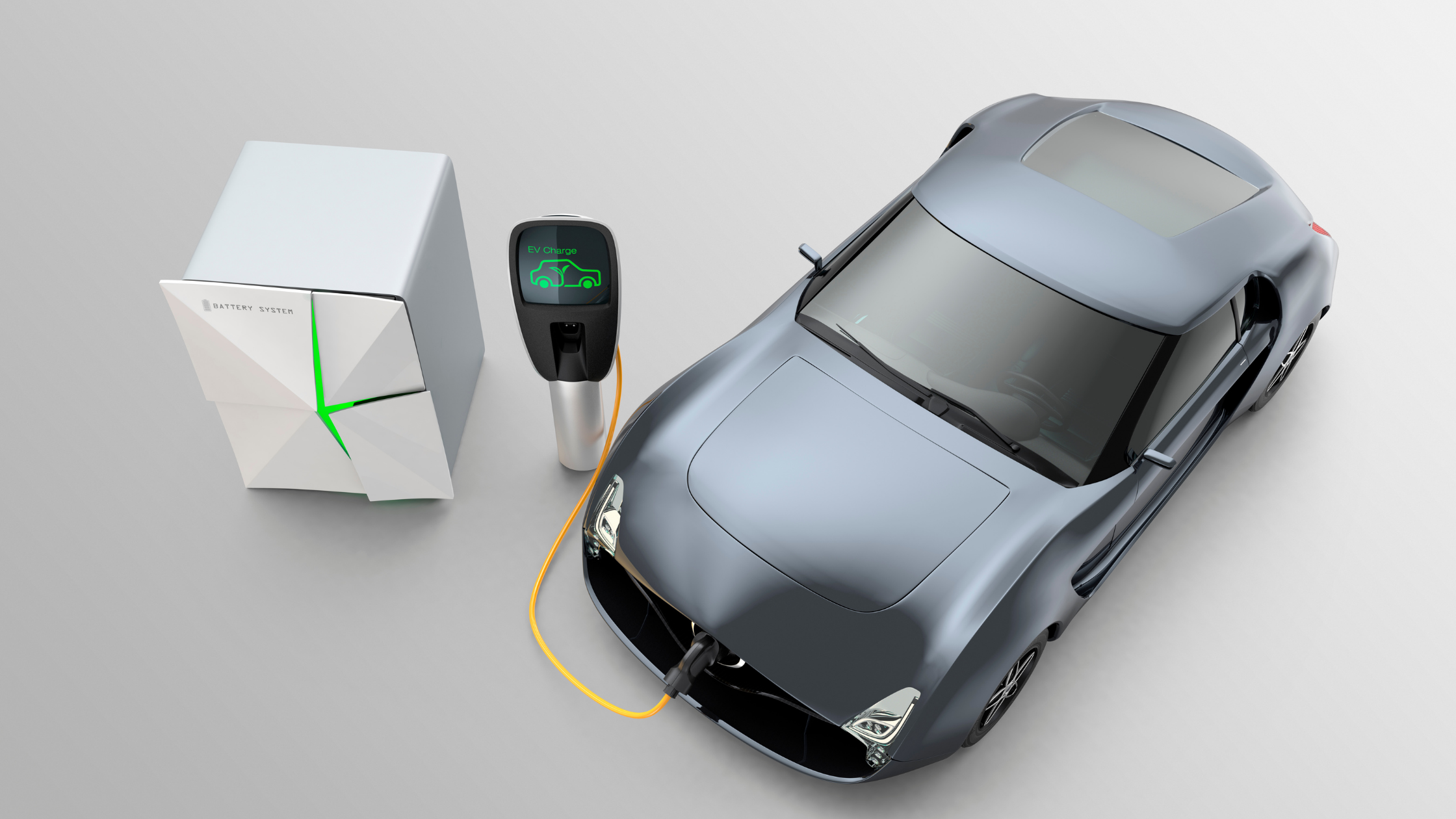Everyone has heard about electric vehicles (EV) and the buzz behind them, but how do we charge them? There has been a surge of new EV drivers and it’s a race to support the charging needs of the growing number of vehicles hitting the roads. Government plans are in action to support EV charging infrastructure with goals to reach 500,000 devices by 2030.
But the process of installing the devices takes more than just a government plan. It’s the collaboration of local municipalities, businesses, and utility companies along with electric vehicle charging companies to make it a reality.
How Does Charging Work?
EV charging stations, commonly referred to as EVSE (Electric Vehicle Supply Equipment), work by drawing energy from the grid and then transferring that power to the vehicle. The electric vehicle uses that energy, stored in its fuel cells, to power the motor, transferring that power to the car’s wheels.
While there are different types of charging stations, there are also several characteristics to consider, such as proprietary vehicle plugs and charging station placement that can impact which charging station works for different vehicles and different scenarios.
Types of Chargers
- L1 (Level 1) – Most EVs come with this basic 110-volt charging unit that uses the same standard outlets commonly found in households and personal garages. It can take from 8 to 24 hours to fully charge and provides up to 5 miles per hour of driving. This level is ideal for EV owners with short commutes who do not need consistent long-distance travel.
- L2 (Level 2) – This level charger can be installed residentially but is more often seen on commercial properties. It provides up to 20 miles of range per hour and can fully charge a battery in a four-hour minimum but will require extra equipment to handle 240 V residential, and 208 V commercial outlets.
- Public V.S. Private Charging – L2 is the most common type of public charging unit and is seen in high traffic retail parking lots, parking garages, larger cities, or college towns. L2’s can also be installed in the home; however, it can be expensive due to the required equipment, installation, and electricity costs. There are state and/or local incentives that may be available to individuals as well as corporations.
- DCFC (DC Fast Chargers) – The fastest but most costly option which charges at a rate of 80 miles per 20 minutes and can refuel a battery in 30-60 minutes. 480 V AC inputs require advanced technology which is not compatible with all-electric vehicles. DC Fast Chargers are seen at rest stops on busy highways and in major metropolitan cities. There are three different types of DC Fast Chargers available.
- CHAdeMO
- CCS (Combined Charging Standard)
- Tesla Supercharger
Site Installation
Deploying a charging station involves more than just the installation. The planning, layout, and maintenance all play an integral part in ensuring that the station functions properly and is installed under the correct policies and safety conditions.
Station Location
Several factors go into deciding where to place a charging unit. Although there may be a preferred location based on aesthetics, user access, and station protection, installation costs can impact the best location for the unit. The charging station should be as close as possible to the power source to keep installation costs low without sacrificing access. It’s best practice to run through several location options to determine which best fits the criteria.
Power sources and wire routes
Before installing a unit on a property, a full assessment of the electrical panels that will be used to feed the charging unit is required. The panel must comply with the current electrical building code, especially if any modifications to the charging station circuit have been made. Trenching, conduit, and the wire itself can be a major portion of overall costs, therefore it is important to have a plan in place to achieve the shortest run with the least obstructions to control costs.
Permitting
A permit for an EV charging station is required before the unit can be installed and available to use for drivers, for both commercial and residential levels. Permits can differ based on what state/local code dictates as well as the type of charger that is being installed.
Cellular Signal Strength
Network-connected charging stations require a strong cellular signal to communicate with the provider, and this is not always the same frequency that is used on a cell phone. Generally speaking, this is more of a concern in rural areas where the cellular connection is sometimes weaker. In cases where the signal is not strong enough, boosters or antennas can be utilized for the unit.
Electric Vehicles and Smart Grids
Due to the rise in popularity of EVs and the fact that charging stations require sufficient energy, utility experts are concerned about the capabilities of the current electric grid, which refers to the network of transmission lines, substations, and transformers that transfer energy from power plants to homes and other facilities. The United States electric grid is aging, and the need for Smart Grids is here.
A Smart Grid is an alternative electricity network that allows a two-way flow of electricity and data that can react and proact to changes in usage and multiple issues. Electric Vehicles can communicate with the grid, responding to calls for storing and discharging energy. EVs are well suited for the grid because they provide ample energy storage, easy access for control signals, and are usually geographically dispersed. Without integrating charging stations into the Smart Grid, it increases the risk for bottlenecks, reliability issues, and an over-taxed electric grid.
Technologies behind the Smart Grid
- Smart meters – Relays detailed energy consumption data to the utility automatically and can sometimes respond to remote control signals.
- Grid sensors – Feeds information to owners and operators on IoT (Internet of Things) devices and are distributed throughout grid infrastructure.
- IoT Devices – Responsive appliances and consumer equipment that responds to signals from the grid to change their power consumption, this is where EVs fit in.
Environmental Impact
Many people are aware that electric vehicles reduce carbon emissions and our dependence on oil, but few are aware of the impact that charging the vehicles has on our environment. Rolling out an enabling charging infrastructure is key to supporting an EV driving nation in the long term. A vast network of EVs plugged into smart chargers for long periods creates flexibility for the grid, enabling the intelligent match of supply and demand. This ability to store energy during peak times allows for renewable power to be used as needed and when it is abundant and cheap.
Essentially, this means that utilities can manage when and how the EV charging occurs while still adhering to customer preferences. For example, to charge an electric vehicle as cleanly as possible, it needs to be charged early in the morning when the power demand is at its lowest and wind power is usually at its highest. Smart Grid technologies allow this to happen, however, if the consumer needs an immediate recharge at a different point in the day that is also possible.
Incentive Programs
There is a multitude of tax credits, rebates, and grants, not only for consumers purchasing an EV but for businesses investing in charging stations as well. There are different programs available depending on your State and if the station is a commercial, fleet, or home station.
On the federal level, however, a retroactive tax credit of 30% of the cost to purchase and install an EV charging station can be granted. This means up to $1,000 back for residential installations and up to $30,000 for commercial installations. To receive this federal tax credit, the charging station must be purchased and installed by December 31, 2021.
New York State Electric Vehicle Make-Ready Program
ANS Advanced Network Services is proud to have extended its services as an approved contractor for the NYS EV Make Ready Program with Joint Utilities of New York. The goal of the Electric Vehicle Make-Ready Program is to support the development of electric infrastructure and equipment necessary to accommodate an increased deployment of EVs within New York State by reducing the upfront costs of building charging stations for light-duty EVs. Through this EV Make-Ready Program, entities seeking to install or participate in the installation of Level 2 and/or Direct Current Fast Charging chargers can earn incentives that will offset a large portion of, or in some cases, all of the infrastructure costs associated with preparing a site for EV charger installation. The program currently extends to the following Service Areas: Central Hudson, Con Edison, National Grid, NYSEG, RG&E, and Orange & Rockland.
Why Should You Consider EV Charging Stations?
A business with a charging station installed at its facility sends a clear message to its customers: This business is working towards a greener future. By providing sustainable fueling options for your community, your business is helping not only to reduce carbon emissions but is contributing to the accessibility of EVs and the essential infrastructure to keep up with the demand for green vehicles.
Beyond the environmental benefits, a charging station inherently increases foot traffic and leads at your location, providing revenue with billable services to patrons. Charging stations increase property value while enabling the property to work for you by creating a reoccurring revenue model regardless of your industry.
Contact an ANS Team Member Today
ANS offers end-to-end EV charging solutions, including design, hardware, installation, software, and services. ANS will assess your location to analyze the best placement for the charger and recommend the optimal charging option to best fit the location while meeting your revenue and service goals. Depending on your state, we will guide you through the process of finding rebate and incentive programs for maximum funding towards your deployment. Once surveying, engineering, and approval from utilities are complete, a rapid deployment can be accomplished in close to a week.





